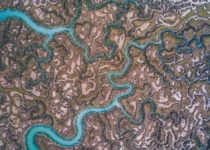9 Essential Tips for Creating a Memorable Travel Journal

Travel journaling is a powerful and accessible practice that allows individuals to preserve the essence of their journeys, capturing not just the sights but the emotions, sensations, and personal reflections that make each trip unique. Unlike traditional photo albums or social media posts, a travel journal offers a private, intimate space to document experiences in a way that fosters mindfulness and enhances memory retention. It is not reserved for expert writers or avid travelers; anyone with a desire to remember their adventures can benefit from this simple yet profound habit. By focusing on presence rather than perfection, travel journaling becomes a flexible and enjoyable activity that can be tailored to fit any lifestyle or travel style.
At its core, a travel journal is a dedicated space—whether physical or digital—for reflecting on travel experiences. It can serve various purposes, from logging practical details like itineraries and expenses to acting as a personal diary filled with emotional insights and sensory observations. There is no single correct way to maintain a travel journal; it is entirely customizable based on individual preferences. Some people might prefer writing lengthy narratives at the end of each day, while others might opt for bullet points, sketches, or even voice recordings. The inclusion of mementos such as ticket stubs, pressed flowers, or photographs can add a tactile dimension, making the journal a rich tapestry of memories. Digital options, including apps and voice memos, offer convenience for those on the go, ensuring that journaling can happen anytime, anywhere. Ultimately, the goal is to create a container for the nuances of your experience—the surprises, comforts, and joys that define your journey.
Beyond mere documentation, travel journaling offers significant mental health benefits, particularly in managing the often overwhelming nature of travel. Travel can be exhilarating but also disorienting and exhausting, with new environments triggering heightened sensory input. Journaling provides a grounding mechanism, helping to regulate the nervous system and reconnect with one’s body. By taking a moment to write, travelers can slow down and reflect, interrupting the constant momentum of exploration to process their emotions and experiences. This practice not only strengthens memory by capturing specific details but also offers a safe outlet for a range of feelings, from awe and wonder to frustration and loneliness. In this way, a travel journal becomes a tool for emotional clarity and self-care, enhancing overall well-being during and after trips.
To get started with travel journaling, it’s helpful to follow some simple, practical tips that emphasize ease and personalization. First, begin with what you already have; there’s no need to invest in expensive supplies. Use a notebook you own, a smartphone app, or even scraps of paper. The key is to choose something portable and accessible that you’ll actually use when tired or busy. Second, experiment with different formats to find what suits you best. This could involve mixing written entries with visual elements like drawings or photos, or using prompts to spark ideas when you feel stuck. Common prompts include questions like ‘What surprised me today?’ or ‘What made me laugh?’, which can guide your reflections without pressure.
Third, make your journal easy to access by keeping it in a convenient location, such as a day bag or on your phone’s home screen. This reduces barriers to entry and encourages consistency. Fourth, journal at times that fit naturally into your schedule, whether it’s during morning coffee, while waiting for a meal, or before bed. Pairing journaling with daily rituals can help integrate it into your routine. Fifth, focus on small, sensory details rather than trying to capture everything. Noting specific smells, sounds, or sights can make entries more vivid and memorable. Sixth, use prompts to overcome writer’s block, making the process less daunting and more engaging.
Seventh, embrace imperfection; allow yourself to write messily, use shorthand, or include incomplete thoughts. The aim is authenticity, not polished prose. Eighth, consider saving physical mementos like tickets or leaves to attach to your journal, as these can evoke powerful memories later. For digital journals, create folders for photos and recordings. Ninth, periodically re-read your entries to gain perspective, spark gratitude, and reinforce mindfulness. This not only enhances the journaling experience but also deepens your connection to the journey.
Frequently asked questions about travel journaling often revolve around practicality and flexibility. What to write? Start with whatever feels most alive in your memory—emotions, sensory experiences, or simple observations. Reasons to journal include enhanced memory, emotional clarity, and creative expression. Is it hard to maintain? Only if you set rigid expectations; staying flexible and using low-effort methods like voice notes can make it manageable. Paper vs. digital? Choose based on your preferences; paper offers a tactile experience, while digital is convenient for on-the-go entries. Can you start after the trip? Absolutely; post-trip journaling allows for deeper reflection and processing, even if details are fuzzy.
In summary, travel journaling is a versatile and rewarding practice that enriches travel experiences by promoting mindfulness, preserving memories, and supporting mental health. By following these tips and adapting them to your needs, you can create a travel journal that is both personal and meaningful, capturing the moments that matter most in a way that feels authentic and enjoyable. Whether you’re a frequent traveler or someone exploring locally, this habit can transform how you engage with the world around you, making every journey a more profound and memorable adventure.


